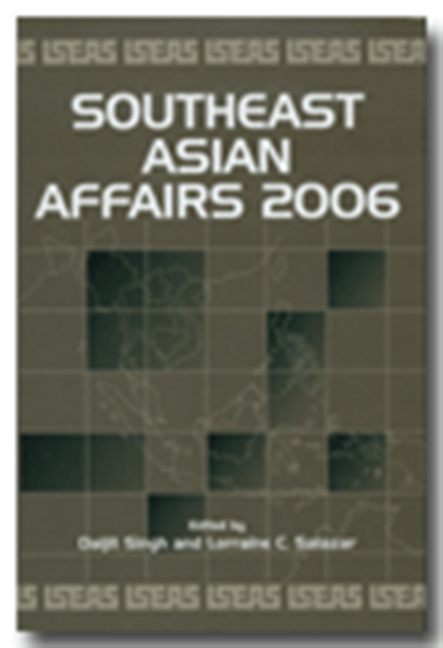Introduction
Published online by Cambridge University Press: 21 October 2015
Summary
At the end of 2005 Southeast Asia looked in a better condition than at any other time since the 1997 Asian crisis. The economies had recovered and there was steady growth as countries continued to pursue economic reform. The world economy was resilient in 2005, notwithstanding a modest cyclical slowdown during the year. Moreover, Southeast Asia's economic prospects were buoyed by the growing linkages with the rising economies of China and India and a recovering Japanese economy. Apart from a few cases, regime stability characterized the political landscape of the region.
There were two other positive factors: Indonesia and the Association of Southeast Asian Nations (ASEAN). As the largest country of Southeast Asia located in a huge maritime swathe between the Philippines on the east, Australia in the south, and the Bay of Bengal in the northwest, Indonesia's stability or lack of it, has had an important bearing on perceptions of Southeast Asia. Under the administration of President Susilo Bambang Yudhoyono, the country was back on the right track, working to achieve domestic stability, improve governance, build institutions, and attract investments.
Meanwhile, ASEAN was regaining some of the importance it used to enjoy a decade earlier. It was again in the centre of moves to shape a new Asian regional architecture as it organized the first East Asian Summit that included not only the 13 members of the ASEAN+3 process but also India, Australia, and New Zealand. It was being courted by the major powers as each tried to maintain or extend its influence.
ASEAN's complexion also seemed to be undergoing subtle changes as a result of the democratization of Indonesia and the growing realization that the principle of non-intervention needed to be used flexibly to enable cooperation on transnational challenges. The decision to draw up an ASEAN Charter raised hopes of a more rules-based organization with a better sense of common values.
Yet, despite the more promising outlook for Southeast Asia, many challenges remained.
- Type
- Chapter
- Information
- Southeast Asian Affairs 2006 , pp. ix - xviPublisher: ISEAS–Yusof Ishak InstitutePrint publication year: 2006



